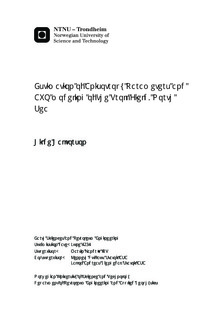| dc.description.abstract | In the work of this Master's thesis, the anisotropy parameters, epsilon and delta, for the reservoir and the cap rock on the Troll Field have been estimated. This was done using well logs from 35 wells, including the P-wave sonic log and the inclination angle log of the wellbore. The velocity from the sonic log and the inclination angle were applied to a second order polynomial equation, which includes the anisotropy parameters.The Matlab software was utilized to perform the calculations and to generate plots necessary to estimate the parameters. To obtain more reliable results, different filters were applied to the data set for both the reservoir and the cap rock. The filters consisted of different intervals of porosity, acoustic impedance and depth, both individually and combined in different ways. In advance of the filtering, histograms were made for porosity, acoustic impedance and depth to look at the distribution of each, in order to find the range the different parameters could be filtered for.This process resulted in the following estimations of the anisotropy parameters for the reservoir: epsilon = -0.08 and delta = -0.03. The anisotropy parameters for the cap rock, which is a shale in most of the wells, was estimated as follows: epsilon = 0.11 and delta = 0.06. These parameters were applied in an AVO analysis, performed for the vertical well 31/2-L-41. An approximation using 3-term Shuey equation was applied for this purpose. The anisotropic case was compared with the isotropic case. This showed that there is an evident difference between the isotropic and the anisotropic model at large offsets. The exact solution from the Zoeppritz's equations was also included for comparison. This proved to be very close to the approximate solution.Amplitude values from seismic gathers were included in the AVO analysis. This showed that the amplitudes from the gathers increased with incidence angle, as for the isotropic and the anisotropic model. However, the increase in amplitude was much less than for the models.From this work, the estimation of the anisotropy parameters were shown to have a large uncertainty, even after filtering. To make the estimation of delta more stable, more deviated wells to cover the whole inclination angle range, especially from 27-40 degrees, are required. Epsilon is dependent on the vertical and the horizontal P-wave velocity only, thus there should be less uncertainty in estimating this parameter.From the AVO analysis, including the amplitudes from the gathers, no conclusive statements could be established due to the fact that the amplitude values had to be scaled to fit the amplitude values with the models. The amplitudes of the gathers were scaled to the amplitude of the isotropic case at far offset, thus the result could have been altered if scaled to the anisotropic case. | nb_NO |

